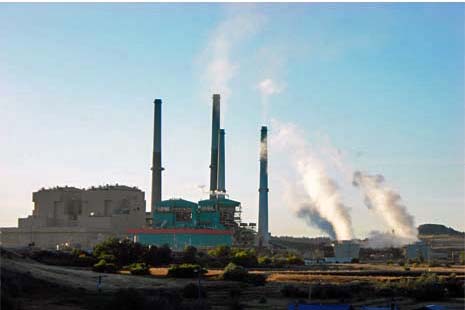In the midst of one of the worst wildfire seasons the West has ever seen, and as Houston, the Florida Keys, Puerto Rico, and the Gulf Coast begin to rebuild after an unprecedented four consecutive devastating hurricanes, the U.S. Environmental Protection Agency announced plans to scrap the Clean Power Plan—the only U.S. policy limiting carbon pollution responsible for our warming climate and contributing to the catastrophic weather events we’ve witnessed in the past decade.
EPA Administrator Scott Pruitt initiated the repeal process on Oct. 10 by opening a 60-day comment period on the rule. The decision follows President Trump’s March order calling for a review of the plan. EPA said it plans solicit public comments on a potential rule to replace the Clean Power Plan.
The Clean Power Plan was President Obama’s signature policy to curb greenhouse gas emissions from power plants by 32 percent. Finalized in 2015 but tied up in court, it would have pushed states to reduce carbon pollution and meet specific targets by 2030.
| Estimated % of adults in WORC states who support setting strict CO2 limits on existing coal-fired power plants, 2016 | |
| Colorado | 69% |
| Idaho | 65% |
| Montana | 64% |
| North Dakota | 58% |
| Oregon | 71% |
| South Dakota | 66% |
| Wyoming | 55% |
| National | 69% |
| Source: Yale Climate Opinion Maps | |
Two WORC member groups expressed disappointment in the announcement.
“The Clean Power Plan was grounded in good science and good law, and it was supported by citizens and businesses from around the country, including here in Wyoming,” said Christy Gerrits, Board Secretary of Powder River Basin Resource Council from Gillette, Wyo. “We are disappointed that the EPA decided to prioritize marginal corporate profits over public health.”
“Clean energy is one of the fastest growing sectors of the American economy, boosting manufacturing and employment with numbers unmatched by nearly every other economic sector” said Ben Reed, a Northern Plains Resource Council member and energy developer from Billings, Mont. “Our President needs to acknowledge and support American ingenuity and the desires of a growing majority of Americans. Instead, he’s choosing to ignore them in favor of outdated and harmful technologies.”
In 2015, EPA projected the economic benefits of the plan would dramatically outweigh the costs. A recent report by NYU’s Institute for Policy Integrity found that changes in the electric sector since that time make the CPP’s targets for reducing carbon pollution even easier, and cheaper, to achieve.
“Reducing our carbon pollution to safe and sustainable levels is really the only way forward,” Gerrits said.
Despite a lack of leadership from the White House, carbon pollution is trending down in the United States due to market forces. “Fortunately, our marketplace has shown that it is more powerful than the president,” Reed said.
Analysis by the research firm Rhodium Group found that electricity emissions are on track to fall roughly within the range of what the Clean Power Plan envisioned, even without the force of the rule. Wind and solar comprised more than 60% of new utility-scale generating capacity added in the United States in 2016, and this shift is likely to continue.
“EPA’s action won’t stop the momentum behind clean energy,” Gerrits said. “Utilities will keep building and using clean power, as wind and solar resources are not just the energy of the future, but are the energy of today.”
“We will continue to build cleaner, healthier communities with new jobs, and with greater reliability, security, and control of our energy future,” Reed said.
- EPA’s Federal Register notice
Sign up for WORC blogs
WORC will send you a notice of new blog posts. You can sign up here.

